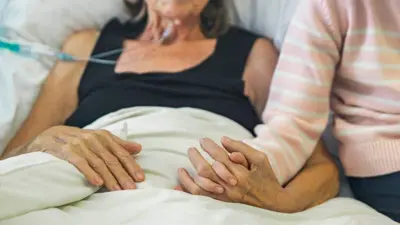We've updated our Privacy and Cookies Policy
We've made some important changes to our Privacy and Cookies Policy and we want you to know what this means for you and your data.
How many staff does the NHS need?
Image source, Thinkstock
- Author, Nick Triggle
- Role, Health correspondent
Top Stories
When the NHS was created in 1948 there were 144,000 members of staff. In less than seven decades that figure has risen tenfold to 1.4 million across the UK.
But with all the political parties promising more health workers in the coming years, just how many doctors, nurses, porters, therapists and managers does the NHS need?
Ask the experts and they will say something like 8,000 more GPs, 20,000 more nurses and 3,000 more midwives.
Unsurprisingly, these are the figures that are - more or less - being promised by politicians in this election campaign.
But how certain can we be that this right? After all, we live in an era of huge technological change that surely could revolutionise the way the system works?
Top Stories
NHS staff and workforce pressures in numbers
Image source, GUSTOIMAGES/SCIENCE PHOTO LIBRARY
- In 1948 the NHS employed 144,000 staff. There are now about 1.4m.
- The consultant workforce grew by 54% between 2002 and 2012 and annual growth of 4% is predicted until 2020.
- In 2012, almost 50% of the nursing workforce was aged 45 or over, compared to 33% in 2002.
- When the NHS was created nearly half of people died before the age of 65, today just 14% do.
- The number of over 85s has more than doubled since 1981 to 1.4m. In 20 years time there will be 3.6m.
- The NHS in England spends ВЈ5bn a year on education and training.
Currently, face-to-face contact accounts for nearly 90% of all healthcare interactions.
But the potential for digital technologies and even simply increasing the amount of email, Skype and phone consultations could make a big difference.
In the US, the health company Kaiser Permanente has reduced the amount of GP visits being made by a quarter through greater use of phone and email.
Meanwhile, hospital doctors and nurses in West Yorkshire have set up video link-up with local care homes and reduced admissions by 35%.
There is also the potential for more self-management of illness, while the use of sensors and alarms in the home can make a big difference to the amount of home visits needed to check in on the frail elderly.
Even so, some have doubts about just how much of a revolution there will be.
Nigel Edwards, chief executive of the Nuffield Trust think tank, says: "It doesn't look like technology will be the breakthrough it has been in other industries.
"Health and care is pretty labour heavy - that means having people on hand."
Instead, he says, perhaps the more pressing issue is what sort of staff are actually needed.
It is a question posed by Health Education England's published in October.
It doesn't make any firm predictions and instead acts as a discussion document, listing a host of factors likely to mean more staff have to be taken on, including the ageing population and the high numbers of staff reaching retirement age.
But it says if the drive to move care out of hospital and into the community is to be successful, it will require staff roles to change.
Top Stories
Richard Murray, of the King's Fund, which has just produced a report warning the NHS that it needs to get better at workforce planning, says: "We hear talk that more GPs are needed when it could be that more practice nurses, district nurses, physios and pharmacists could arguably be more effective and treating some patients and easier to recruit."
He believes it is "probably inevitable" that the workforce will have to grow, but points out that the answer to the question is different depending on whether you ask how many the NHS wants or how many the NHS needs.
Health Education England recently asked employers what they were after as part of a five-year workforce planning exercise.
The answer came back from a number that they would want fewer staff.
The reason? Concern they did not have the money to employ more.
The organisation ended up ignoring the suggestions and in its latest planning document announced it was increasing training places in many areas.
When it comes to planning the future workforce in the NHS, it seems there are no simple answers.
Top Stories
More to explore
Most read
Content is not available








